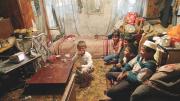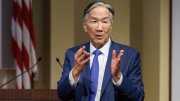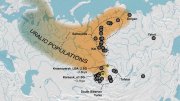If poverty means more than just the weight of a wallet, the world’s poor may be more numerous than previously believed. World Bank estimates put the population of global poor at 1.44 billion people--but a recent poverty index based on the work of Nobel laureate Amartya Sen, Lamont University Professor and professor of economics and philosophy, raises that number to 1.71 billion.
The differences lie in how poverty is measured. The Multidimensional Poverty Index (MPI), published in July by researchers from the United Nations Development Program (UNDP) and Oxford University’s Poverty and Human Development Initiative, factors in living standards ranging from sanitation and the composition of household flooring (dirt, sand, or dung) to child mortality and years of schooling. The MPI asks how far a person has to walk for clean drinking water, while the World Bank’s measure is based solely on income, defining anyone who earns less than $1.25 a day as poor. By the World Bank standard, for example, only 39 percent of the population of Ethiopia would be considered poor; by MPI calculations, the figure is 90 percent. Conversely, 46 percent of Uzbekistan’s population would be classified as poor using the $1.25-a-day measure, but only 2 percent meet the criteria under the MPI. A change in how the poor are counted could vastly improve the effectiveness of international aid organizations as they allocate resources among impoverished people globally.
“This dollar-a-day measure doesn’t take into account many variations that influence the conversion of income into good living,” Sen points out. He offers the example of the victims of the recent floods in Pakistan: their reduced income would be noted, but the difficulties they face during resettlement, he says--the deleterious effects on education and on the availability of proper medical care--“would not be captured in an income measure like GDP per capita” (the metric commonly used by economists). “All these would be captured in a properly multidimensional measure.”
An important watershed in the definition of poverty occurred this year when the MPI was included as one of three new indices in the UNDP’s Human Development Report 2010, all three serving as a complement to its Human Development Index (HDI), a highly influential measure focused on health, education, and standard of living that is used by policymakers charged with the allocation of aid. The annual report, which celebrated its twentieth anniversary last year, included an introduction by Sen, who is credited with playing an integral role in assembling the original HDI.
Sen’s interest in alternative poverty measures began in the late 1950s at the University of Cambridge, when he and fellow student Mahbub ul Haq (later a policy director at the World Bank and Pakistan’s minister of finance) began discussing an alternative to the GDP per capita benchmark. Haq argued for the usefulness of a simple, easy number, but Sen saw that as coarse. “What you need,” Haq told him, “is something as vulgar as GDP except concentrated on something meaningful like human life.” Their conversations laid the groundwork for what would become the HDI. “It was never intended to be a substitute for all the multitude of tables that the Human Development Report presents,” says Sen. “It’s a kind of appetizer and, indeed, a general alternative view in a highly simple form--to indicate that, in order to concentrate on human life, you do not have to get into such complexity that people go back to using GDP unalloyed.”
Although income-based measures like GDP and per capita income can still dominate discussions of poverty measurement, there are signs that the kinds of multidimensional models that Sen has long advocated are beginning to gain influence. The MPI’s Oxford developers credit Sen’s work as their foundation, and other researchers are following his lead; governments have begun to institute the measures on a national level. In 2009, Mexico instituted a multidimensional measurement of poverty levels, to better formulate national policy. A year earlier, French president Nicolas Sarkozy commissioned Sen and fellow Nobel laureate Joseph Stiglitz to define measures for a survey of his fellow citizens’ general well-being. (The resulting report, released last fall, suggested that the French government should adopt a multidimensional approach that focused not solely on income, but on a range of quality-of-life measures.)
Even though there are now dimensions of poverty that didn’t exist to the same extent when Sen was crafting the HDI in the late 1980s--for example, the effect of terrorism on personal security--he believes the index has stood the test of time. Findings from a long-term study of HDI results included in the recent Human Development Report revealed broad improvements across most developing countries. Sen is happy with these successes, but he says much work still remains to ensure that such gains not only continue, but spread across a wider spectrum of criteria that improve human quality of life around the globe.









